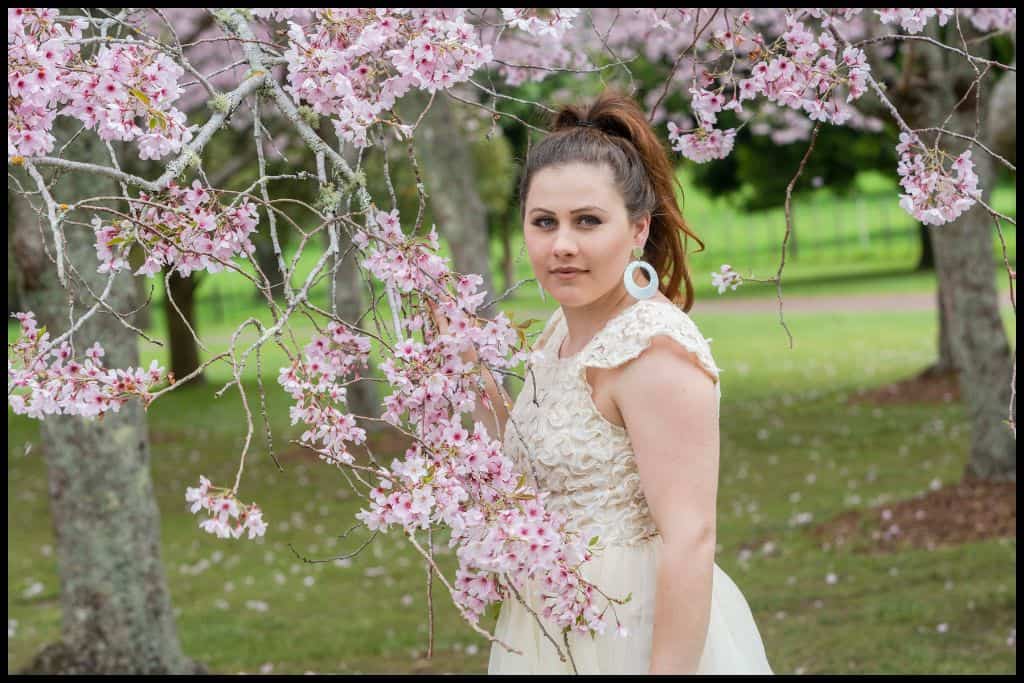New Zealand in Spring: 15 Best Things To Do & Where To Go

Are you planning a New Zealand getaway? Spring is a great season in which to visit.
Spring is a pleasant time in much of the country, where snowsports can still be enjoyed, but the weather is starting to get warm enough to undertake cycles and hikes, too. There are many spots around the country to enjoy beautiful blooms, and enjoy seeing an abundance of baby lambs (the sheep population in New Zealand outnumbers the people 5 to 1). In alpine areas, mountains are still covered with snow, but some of that winter weather gloom lifts and we start to enjoy good weather again.
Spring can bring rain to some parts of the country, but this makes it a great time to chase after waterfalls, many of which come most alive after a spell of wet weather.
Wet spells also raise the levels of our rivers, and for those looking to undertake a river journey – whether by canoe or by raft, you’ll find the paddling easier than in our summer months when river levels are lower. There are a plethora of wine and food festivals happening around the country, as there are year-round, and our native birds start to have their young, so it’s a great time to see some of our little chicks, as well.
New Zealand In Spring
First things first: when is our New Zealand spring? Spring in New Zealand lasts for the duration of September, October and November. Schools and universities have a two week break in September or October, and at the end of October, we celebrate Labour Day with a long weekend nationwide.
What Is The Weather Like In New Zealand In Spring?
September can still be quite brisk, and sometimes the cold weather extends into much of October or even November, as sometimes winter comes back for a second dose! Each year and region is different, and making generalisations has its complications.
It’s not unusual to get rain in many areas, but there are still so many outdoor and indoor activities that can be enjoyed alike. Labour Weekend at the end of October is frequently heralded nationwide as the first weekend of summer, so November can be a fairly comfortable time for a visit – but bear in mind that skifields will have closed for the season, if that is one of the main factors of appeal for you.
Spring varies a lot area to area, and month to month. September in a southern region like Otago can range from 3°C to 13°C, (which is 37°F to 55°F) , and November in a southern region can remain somewhere between 7°C to 15°C, (which is 47°F to 59°F).
Up north, in places like Auckland or Northland, September can range from 9°C to 17°C, 48°F to 62°F) , and November in a northern region can rise to between 12°C to 20°C, (which is 54°F to 67°F).
Being in the Southern Hemisphere, it’s warmer the further north you go, generally speaking.
15 Best Things To Do In New Zealand In Spring
We have endless activities that are best enjoyed during the spring. There are lots of lists out there with our best spring activities, and many include activities that are great year-round. While that is all true, and I could easily give you just as many recommendations for our fantastic shops, museums, restaurants, etc – any of our indoor activities, really, it’s obvious, isn’t it, that ativities not dependent on climate or weather are going to be great year-round?
So what I’ve tried to do with my list is present to you options that are either only accessible in spring, or best enjoyed in spring, for particular reasons. A natural conseuqnece of that is that many of the things on this list are influenced by tne natura seasons: think wildlife, think outdoor environments, think plants. Couple these suggestions with any of our indoor activities, any culinary festivals (there’s always something on), any walking or cycling trails (many of which are great in any fine weather across the seasons) and you’ll have yourself quite the itinerary.
Here are my top 15 spring activities to consider!
1. Visit the only breeding ground of our native white heron, the Waitangiroto Nature Reserve on the Ōkārito Lagoon
Spring is the time to visit the Waitangiroto Nature Reserve down on the West Coast because of all the birds that migrate in at this time of year (to breed) and for you to have the best chances of spotting our native white heron.
White Heron Sanctuary Tours take visitors on guided tours of the nature reserve (you do need to go with their guides) and they will take you out there by minivan and guide you on a walk as well.
The native white heron, the kotuku, is endangered and protected, so the sanctuary only has about 100 birds. It is the only kotuku colony in the world! Chances are that you will also get to spot spoonbills and stags on this tour, so a great birdwatching opportunity for any bird or nature enthusiasts.
The sanctuary is right down the bottom of the West Coast in Glacier Country, so you’ll have amazing mountain views on a clear day, too.
➡️ xx

2. Enjoy daffodils en masse
Spring is when daffodils come into bloom, and there’s a few places around the country that are especially good spots for enjoying them en masse.
Just out of Hamilton is Clandon Daffodils, where you can take a tour for
$15NZD 🇳🇿 ($9USD 🇺🇸 ) (includes a bunch of daffodils for you), and down in Hawkes Bay region you have Taniwha Daffodils, where you can pick your own daffodils! You can pay just $10NZD 🇳🇿 ($6USD 🇺🇸 ) for every 30 stems and can take a picnic to enjoy, or time your visit with the weekend when there is a coffee truck onsite.
Canterbury region has David Bell Daffodils and they, too, offer the pick your own experience. And down in the south of Otago, you have Weatherstons Brewery Heritage Site in Lawrence which has an amazing display of daffodils each year.
If you’re in any of our main cities, city gardens frequently have daffodils popping up all over the place, too, Christchurch in particular, which as known as our Garden City (and Cornwall Park, in Auckland, especially).
Daffodils are very much an early spring phenomenon here, so September, for us.
➡️ xx

3. See the bluebells at the Cambrian Common Wood
Out in Central Otago, up toward St Bathans, is a little settlement called Cambrians, and a little-known treasure, a small, privately owned woodland which is carpeted with a different type of flower each season. It belonged to a gentleman named Bob de Berry who, I have recently learned, passed away in the middle of 2025.
My family and I did pay the woodland a visit in July of 2025, however, and found that the woodland was still very accessible, as you drive up a small lane and will find it right there on the right hand side, unfenced, with signs welcoming you in.
In the spring, the Cambrian Common Wood is carpeted with bluebells – I don’t know anywhere else in New Zealand that has such a concentration of these very English blooms (admittedly the photo below is taken in an English bluebell forest) but if you’re in the area, this is a great side stop to enjoy the beauty Bob planted here. Entry is free.
➡️ xx

4. Have a picnic under a canopy of pink cherry blossom trees
Cherry blossom season rolls around in spring, and many places around the country have amazing pink displays of them, if you know where to go. Late September to early October specifically is the best time to go and find cherry blossom trees.
City gardens are your best bet for finding these colourful spring canopies. If you’re in Auckland, I recommend heading to Cornwall Park (the carparks get very busy at this time of year) and just north of Wellington, in Upper Hutt are the Aston Norwood Gardens – there are 300 cherry blossom trees there! They have an annual blossom festival in September.
Christchurch city has North Hagley Park – but a bounty of other city gardens too, being known as the Garden City, and Dunedin Botanic Garden has some as well.
Central Otago, which is full of stone fruit orchards, also comes alive in hues of pinks and whites in blossom season, and the town of Alexandra even hosts an annual Blossom Festival in celebration!
I thoroughly recommend packing a picnic and stopping underneath some of these beautiful trees to enjoy the colours fully.
➡️ xx
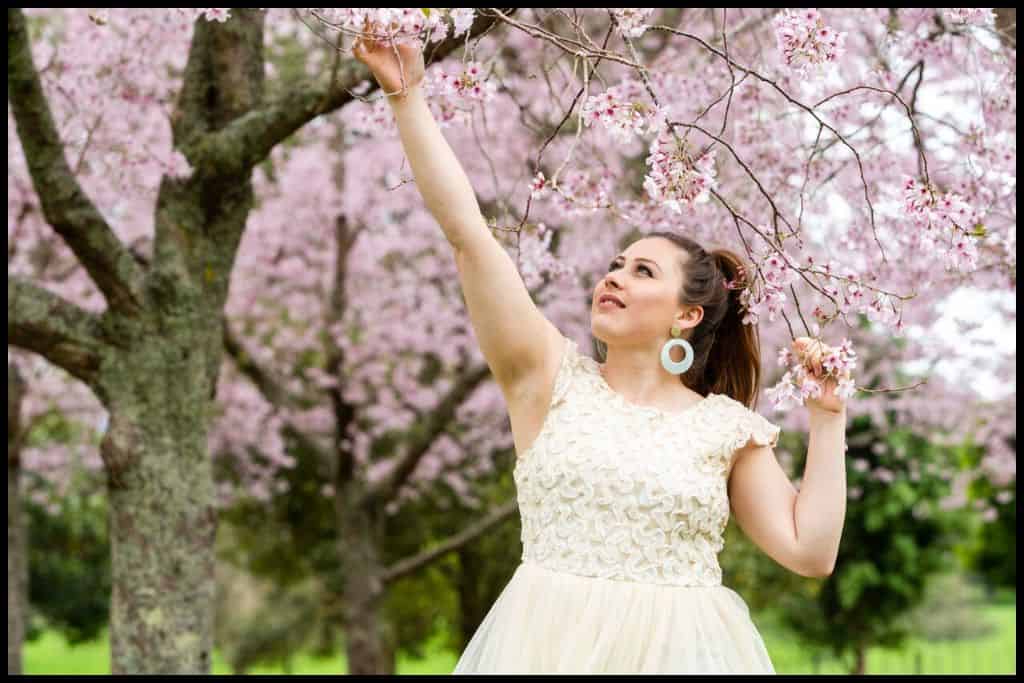
5. Take a trip down one of our mighty rivers
While also a great summer activity, being a water based activity, I recommend a river journey in late spring, as the higher rainfall tends to cause the rivers to run higher. This means faster currents and less work, paddling wise.
This was really highlighted to me in 2023, when a group of friends and I enjoyed a very leisurely three day paddle down the Whanganui River (river conditions were ideal!) but a colleague who went two months later in the middle of summer had to really exert himself to keep moving down the river – quite a tiring experience, and not as chilled out as ours had been! So I recommend journeying one of our rivers in the spring.
The Whanganui River Journey is quite unique in that it involves paddling a Canadian canoe down the river and can be quite a sedate river for those going for three days or less. (The first two days of the five day trip are further upstream and require a bit more experience.
The latter three days are relatively still with only a couple of larger rapids on day three). It is perfectly safe to do a self-guided journey if you are familiar with our rivers and can swim well. (I was six months pregnant and felt very safe!)
If you’re after a white water experience, we have so many rivers where this is a great activity – and spring is a great time to travel these, too. Rivers I would recommend booking an adventure on would be the Tongariro River, the Kaituna River, the Mohaka River, the Hutt River, the Clarence River, the Buller River, the Whataroa River, the Matukituki River, the Kawarau River or the Shotover River.
➡️ xx

6. Take advantage of discounted ski field passes as the season winds up
While snowboarding and skiing in New Zealand is largely a winter activity, our snow season doesn’t tend to finish until mid-spring (October) and before then is still a great time to hit the slopes. What’s more, some ski fields will discount their passes at the end of the season to try and get the last of the season’s business!
The Remarkables, Coronet Peak and Mount Hutt tend to offer special spring passes and it is worth checking out rates, which may vary across different years, and comparing those to the base rates.
I would definitely consider basing myself in Queenstown or Canterbury if you’re here for the spring and did not get the opportunity to get up onto the skifields during winter!
The North Island has Whakapapa and Turoa skifields but, being a single volcano (as opposed to a mountain range), snow can disappear a bit earlier – and conditions can get a bit icier later in the season, too, although I have had plenty of great ski trips in September and/or October up there.
➡️ xx

7. Photograph the famous pink and purple lupins
Spring (and summer) is when people make a pilgrimage for all over to see the famous alpine lupins! These pink and purple flowers are dotted along the Lindis Pass, up in the Mount Cook village area, in higher concentrations next to the alpine lakes Lake Pukaki and Lake Tekapo, and appear over the Crown Range (between Queenstown and Wanaka) and at the top of Lake Wakatipu (Glenorchy and the Rees River area) as well.
The lupin bloom starts in mid November, so right in those final two weeks of spring, and is an excellent time to visit the Mackenzie Basin (which is the area of Aoraki Mount Cook National Park that encompasses Lakes Pukaki and Tekapo).
The lakes are known for being a bright, glacial turquoise, so when the shores are lined with flurries of pink and purple, it is quite a sight.
It won’t take you long to find shots from previous seasons on people’s Instagram feeds and most international travellers coming through at this time do stop in the area to photograph the lupins.
➡️ xx
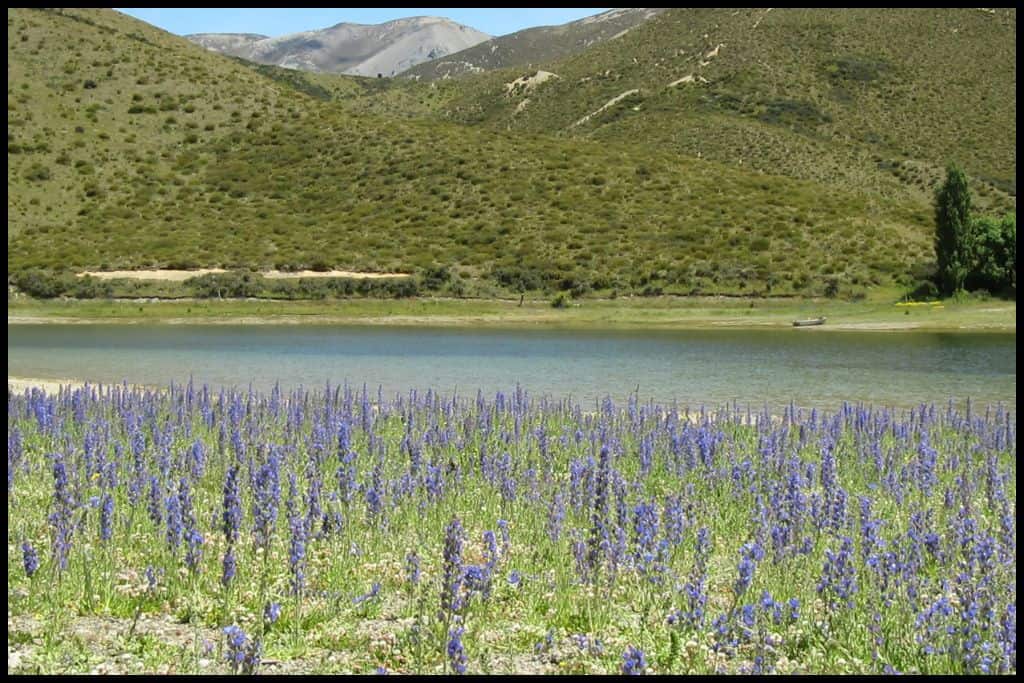
8. Explore your pick of our wonderful city gardens
Spring is a great time to wander about many of the gardens in our main cities – even some of our smaller cities have botanical gardens, too.
Christchurch is known as our Garden City and has a plethora of city gardens to choose from, as does Auckland, with Cornwall Park and the Wintergardens (pictured) as alternatives to the main botanical garden in the south of the city.
Hamilton city has the Hamilton Gardens, Wellington has the Wellington Botanic Garden, and Dunedin has the Dunedin Botanic Garden.
Some of our country’s gardens have been awarded the title of Gardens of International Significance, and this list extends to Ayrlies Wetlands and Gardens in Auckland, Te Kainga Mairie in Taranaki, Flaxmere Garden in Canterbury and Larnarch Castle Gardens in Dunedin.
Flowers start blooming, and any nature enthusiast will enjoy a half day out at some of New Zealand’s best gardens, hot takeaway beverage in hand (always a good idea)!
➡️ xx

9. Go for a wander through some alpine wildflowers
Late spring (I’m talking November) is the time to go for an alpine wilderness walk as the Mount Cook buttercups come into bloom.
Two really great walks to take on in order to enjoy these blooms to the fullest are the Hooker Valley Track and the Mueller Hut Hike. Mueller Hut is a good one to do at the end of November as it goes up quite high and you want to be safe if you are not experienced in alpine environments, but with any luck you’ll still see patches of snow on the otherwise barren landscape.
It can be done as a day hike or as an overnighter – an overnighter in the hut, however, will afford you the chance to see a sunset and possibly a sunrise from up there. It’s about eight hours return – five up and three down approximately, and quite uphill until you get to the hut. It’s just over 10 kilometres (6 miles) and an incredibly popular walk in the national park.
The other option I’d recommend is to take on the Hooker Valley Track – it’s actually the same distance as Mueller Hut but will take you half the time due to a flatter gradient! Some just do a 4 kilometre (2.5 mile) section which is an easy one hour return walk. You’ll get the chance to not only see the alpine wildflowers that grow in the area in spring and summer but may also see icebergs on the glacial lakes.
➡️ xx
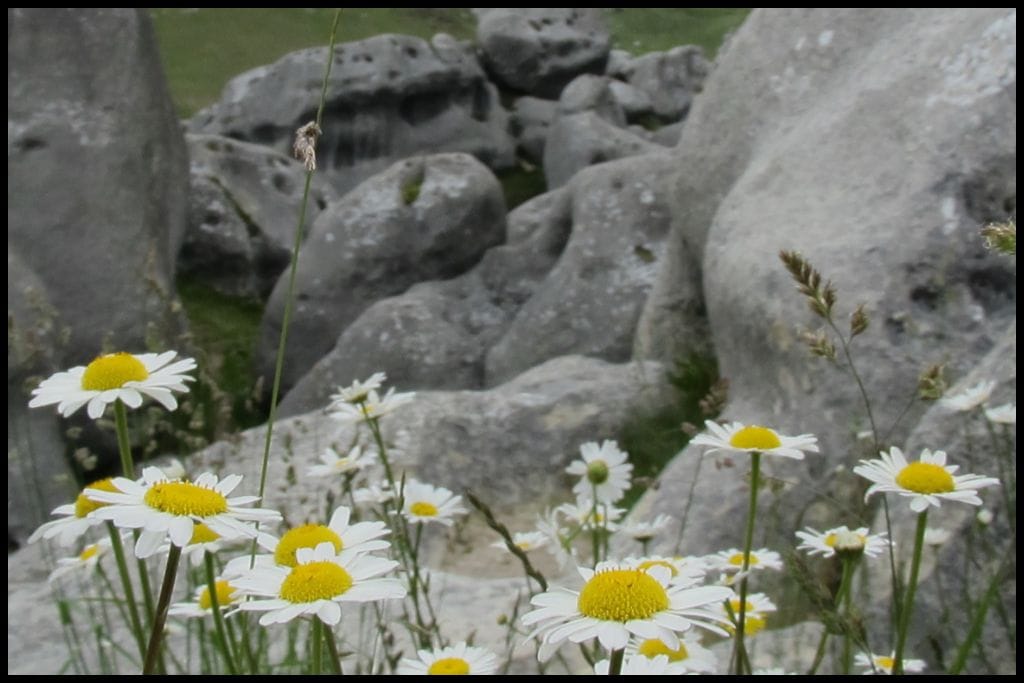
10. Count sheep! (specifically, lambs)
New Zealand has quite the sheep population. It’s down quite a bit now from where it used to be but there are still five sheep to every New Zealander!! In spring, or as early as August (last month of winter) in many places, these sheep give birth to their lambs, so it’s a good season to go for a drive through the countryside and spot some of these cute babies.
Cornwall Park in Auckland comes alive with all the little lambs in spring so is a good place to grab a coffee from the coffee van and head off on one of the stunning walks in the park.
Another great way to experience our lambs is to get yourself booked on some sort of farm tour – or take part in the farm experience at the Agrodome in Rotorua, where you can bottle feed the lambs.
Canterbury is a good region to head to in spring for a farm tour as you have your pick of Farm to Farm Tours (north of Christchurch), Middle Rock Farm Tour (west, or inland, of Christchurch), or Geraldine Farm Tours (south of Christchurch).
Waikato region in the North Island is also big on agriculture and farming and is full of lush green landscapes where you will see lambs dotted around.
➡️ xx
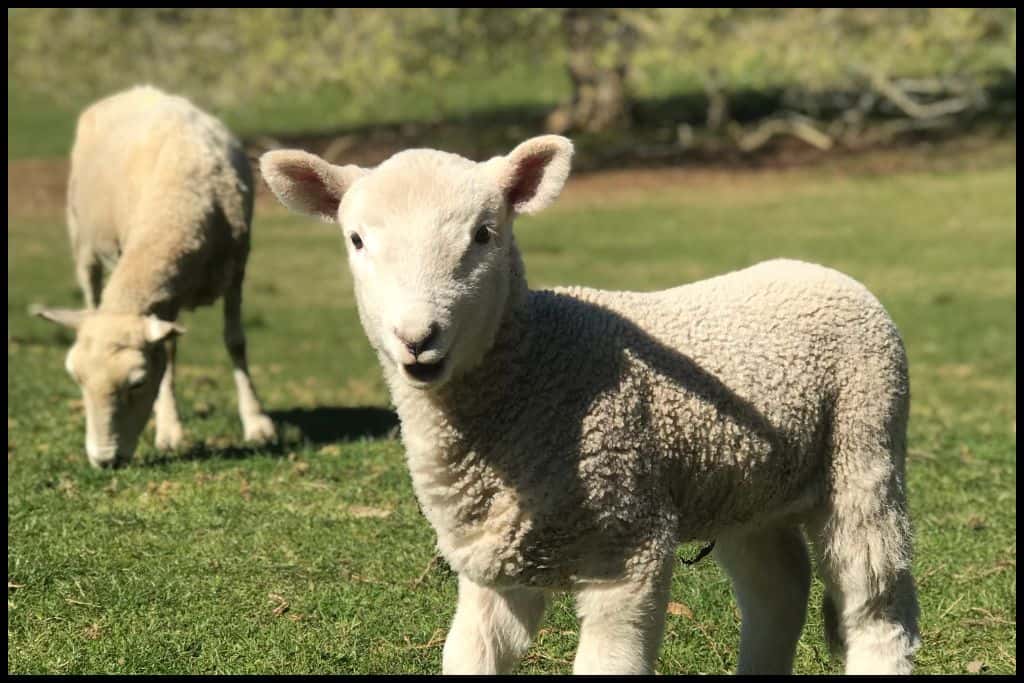
11. Do go chasing waterfalls!
We’re lucky to have so many beautiful waterfalls in New Zealand and I’ve popped this down as a spring activity because that’s when we have a mix of the rainfall you need to ensure many of these waterfalls are actually flowing (and more impressive) and the fine weather needed to go and see them.
While some are great for swimming in, many others are just good for a walk, but with some of them being dependent on recent rainfall in order to have enough flow, spring is a good time to visit.
I would argue this to be especially true in the likes of Milford Sound and Doubtful Sound, both down in the bottom left corner of the South Island, as rainfall makes the valleys come alive with numerous waterfalls that just aren’t there in fine weather. Rest assured though, the area often gets rain regardless of the season so you needn’t fret if you are going at another time of year.
We have hundreds of waterfalls all over the place – I’ve put together the guides you need to get your hands on if you’re planning to go chase a couple!
➡️ xx
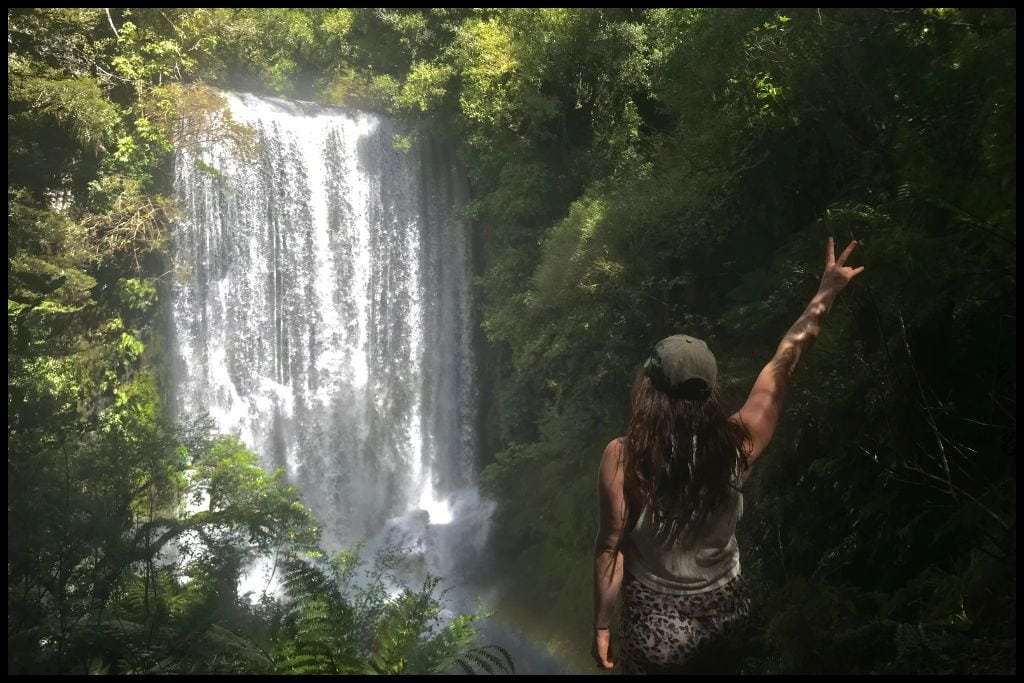
12. Head out on a hike in a picturesque, snowy, alpine environment
Like I mentioned with the Mueller Hut hike earlier, late spring is a great time to go as you will still have the snow in the landscape but not be battling winter conditions or dealing with avalanche risk.
The photo below is taken on the Tongariro Northern Circuit, in the centre of the North Island, which is one of the Great Walks of New Zealand. We walked this in October (mid spring) in 2018 and we were delighted to have patches where we were walking through snow! It made for beautiful pictures up by the volcanic lakes, which, in summer, are quite arid, brown landscapes. The snow just added another highlight to the walk, and this is true of many of our alpine walks.
I also walked the Lake Waikareomoana track (out in Te Urewera, east side of the North Island) in October (mid spring) and we were again, pleasantly surprised by the snow! This is not as common in this area but it certainly made the forest parts of the walk magical, what with the green ferns and patches of glittering snow at the base of the trees.
Fiordland National Park in the southwest South Island has an abundance of great hikes that are sub-alpine, and the start of the Great Walks season (September/October) is a good time to consider going in order to fully enjoy the mountainous landscapes.
➡️ xx

13. Visit our little native penguin chicks
New Zealand has a couple of species of native penguin – the two most common being the yellow eyed penguin, and the little blue penguin.
Spring is when the penguins have their chicks, so I’d recommend making a stop in your travels to see some of these littlies.
Southland and Otago regions, down the bottom of the South Island, are the best places to go – closer to Antarctica, it’s colder down there, and you just won’t really find them further north (except, perhaps, in Akaroa, at the end of Banks Peninsula in Canterbury).
There’s a little blue penguin colony in Oamaru and these guys offer paid viewing experiences of the little blue penguins that live there, so it’s totally worth a stop for an up close encounter.
A little further south are the Moeraki Peninsula and Otago Peninsula, both quite close to Dunedin city. Both peninsulas have penguin colonies and places you can go to spot them. (Always keep your distance – don’t do what I did as a clueless nine year old, below!)
➡️ xx
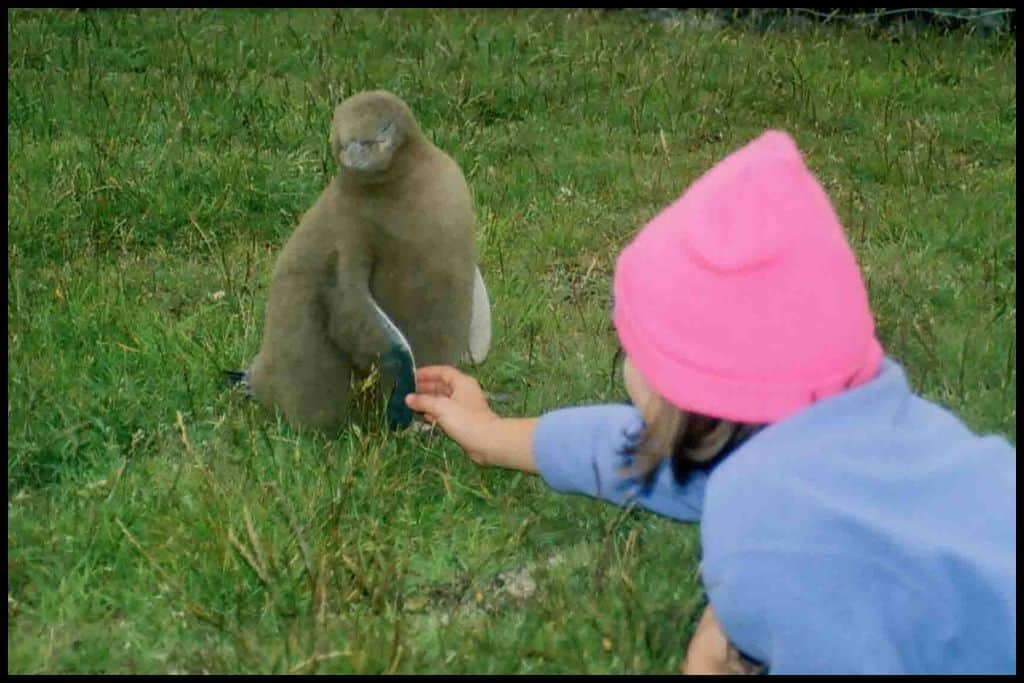
14. Meet the youngest members of our national bird species
Our national bird, the kiwi, also has its chicks in the spring, so this is a special time to go and see these endangered birds. It’s not that common at all to see them in the wild (although I have been able to see them on Stewart Island in 2006 and Ponui Island in 2010).
The best way for guaranteed viewings of kiwi is to visit a zoo or wildlife park. Some of our best are the National Kiwi Hatchery, in Rotorua, Bay of Plenty region, the Ōtorohanga Kiwi House, in Waikato region, Zealandia eco-sanctuary, in Wellington city, or Pukaha National Wildlife Centre, north of the capital, Willowbank Wildlife Reserve in Christchurch city, or West Coast Wildlife Centre down the bottom of the South Island’s West Coast.
Other great encounters can be had on some of our islands – Rotoroa Island, Kapiti Island, or Stewart Island, in particular.
The National Kiwi Hatchery – being a hatchery, specifically, would be my top recommendation for seeing kiwi chicks. It’s the largest kiwi hatchery that there is, and the experts there will tell you everything you ever wanted to know about kiwi chicks and the conservation efforts being put in to hatch more and more of this endangered bird.
➡️ xx
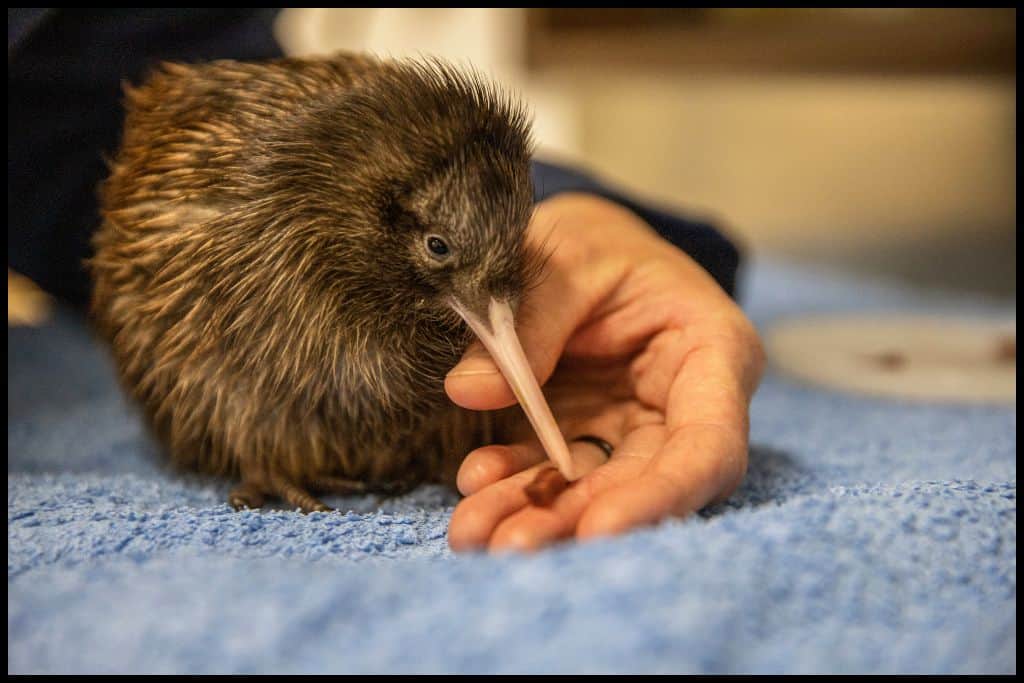
15. Spot an albatross chick at the world’s only northern royal albatross colony (on a mainland, that is)
The only northern royal albatross colony in the world – the only one you can reach by being on the mainland, to be specific – is here in New Zealand, and it’s down south in Dunedin city, at Taiaroa Head, where they now have the Royal Albatross Centre.
Now, the royal albatross chicks actually hatch starting the previous summer, but if you come in spring, you may still get to see the babies, and you will get to see the adult albatrosses making their nests and laying more eggs, or tending to those young, and that is pretty special.
You can learn so much about them at the centre, which is free entry, and it’s a great spring activity if you are down this way.
➡️ xx
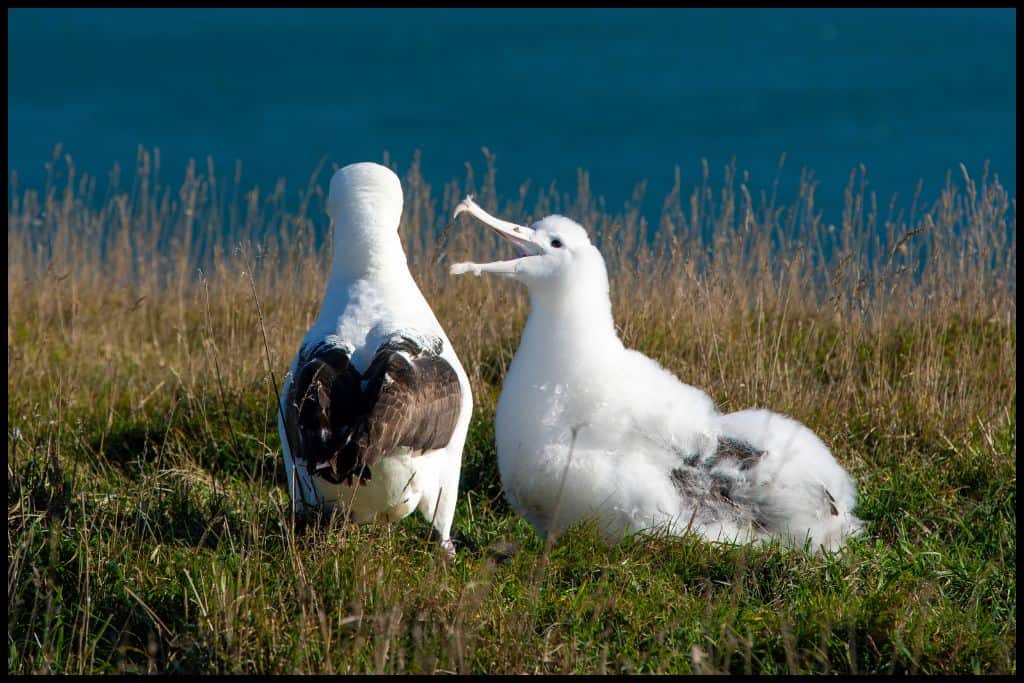
Best Places To Go In New Zealand In Spring
Spring is a fantastic time to visit New Zealand – a happy medium between the beauty of winter and freedoms of summer. There are lots of great spring destinations here, but I would consider these to be extra special at this time of year.
Here is my list of places to consider hitting up if you want to enjoy the spring activities above:
📍 City Centres
City centres, while not specific, are good spots to base yourself in spring – in particular, our larger cities, like Auckland, Wellington, Christchurch and Dunedin.
Basing yourself in Auckland will give you the opportunity to visit Cornwall Park, see daffodils, lambs and cherry blossoms, and perhaps a kiwi chick at Auckland Zoo, or take some walks through the Botanical Gardens or the Wintergardens. Clandon Daffodils in Hamilton city is not far away for a pick-your-own experience, and you also have quite a selection of waterfalls on the outskirts of Auckland city to go and discover (probably the city with the most waterfalls nearby).
Wellington city is an equally good base, with Zealandia Eco Sanctuary for your kiwi chick experience, and the annual blossom festival at Aston Norwood Gardens in the Hutt Valley. Wellington has options for white water rafting on the Hutt River and the Wellington Botanic Garden for your flower fix.
Christchurch, the garden city, is a strategic spot for your spring getaway, with its plethora of city gardens and florals. Hit up David Bell Daffodils and the Hagley Park cherry blossoms, or head inland to Mount Hutt Ski Area and take advantage of any discounts you can get up on the skifield. Jump on a farm tour, check out the sheer number of little lambs that are being born into Canterbury farms each spring, and don’t forget to see Flaxmere Garden and the kiwi chicks at Willowbank Wildlife Reserve, or the penguin chicks out in Akaroa, a day-trip from the city.
Dunedin makes as good a spring destination as any other! Larnach Castle Gardens and the Dunedin Botanic Gardens are a treat in spring, and you have the advantage of being right there near Taiaroa Head to see albatross chicks and the Moeraki and Otago Peninsulas (even Oamaru town is close, with their penguin sanctuary!) for seeing little penguin chicks! The bluebells in Cambrians are just a couple of hours away, and the daffodils in Lawrence are only an hour away, so these are good day-trip options, too.
Want me to choose? Base yourself in the Garden City, Christchurch:
Budget Option: Tasman Holiday Park
Tasman Holiday Park is in a fantastic location for visitors to Christchurch, right in the city centre. It has lots of choices for the budget conscious traveller – tent sites, caravan sites, and cabins. I was here in 2022 and found the the facilities good and the camping spaces really pleasant. Unpowered tent sites cost just $42NZD 🇳🇿 ($25USD 🇺🇸) and powered sites for caravans or campervans are $59NZD 🇳🇿 ($35USD🇺🇸).
Mid-Range Option: City Centre Motel Christchurch
City Centre Motel Christchurch is an affordable motel with a good location, and most suitable for the traveller who is wanting comfort. Rooms start at approximately $130NZD 🇳🇿 per night ($77USD 🇺🇸). They have both apartments and studios available, and offer Netflix as well as good wi-fi. Many things in the city centre are within close walking distance, which makes for even more affordablity.
Luxury Option: Observatory Hotel
The Observatory Hotel is elegant hotel in the middle of the city – and such an elegant one, being a restored 1800s building, full of character and beautiful design. It has a lounge and a gym, with breakfast included daily, and they have a variety of custom designed rooms. The premier room is on the top floor and has a beautiful bathtub with skylights overhead. This one goes for $799NZD 🇳🇿 ($475USD 🇺🇸) per night.
📍 Mount Cook National Park
Aoraki Mount Cook National Park is a great contender for a spring holiday. Base yourself in Mount Cook Village or the nearby Mackenzie Basin (Lake Tekapo area) for the best proximity to things.
Go for walks, admire the Mount Cook buttercups and daisies that bloom in spring, and head around the Hooker Valley Track or up to Mueller Hut if you have the time for a climb!
Come at the end of November to catch the world famous lupins, found in Mount Cook Village itself, and famously on the shores of Lake Pukaki and Lake Tekapo. While not a river journey, it’s worth getting yourself on a boat tour of the Tasman Glacier terminal lake for an experience out on the water.
You’ll be in picture-perfect paradise, with the snow still very much on the mountains. Keep your days at a relaxing pace in the alps.
Budget Option: Haka House
Haka House is situated on the shores of Lake Tekapo and boasts great views over the lake. Budget travellers will appreciate that you can book a bunk bed in an eight bed dormitory for only $55NZD 🇳🇿 ($32USD 🇺🇸), which makes it a truly affordable way to stay in quite a highly touristed spot. Haka House has an onsite burger bar and barbecue facilities, if you want to bring your own food.
Mid-Range Option: Lake Tekapo Village Motel
Anyone after a little more comfort but without accruing too much more of a price tag, consider Lake Tekapo Village Motel. The motel has two bedroom studios and suites in the range of $250NZD 🇳🇿 ($148USD 🇺🇸) per night, and they have wifi, a laundry, and onsite parking, for your convenience.
Luxury Option: Peppers Bluewater Resort Lake Tekapo
Peppers Bluewater Resort boasts the most incredible views from your private room, priced for between $270NZD 🇳🇿 ($160USD 🇺🇸) and $370NZD 🇳🇿 ($220USD 🇺🇸) per night. They’re located close to the village and they have a restaurant onsite, too. Daily breakfast is included and the rooms are well-designed. If you’re looking for a little bit of luxury and a relaxing stay in the mountains, take a look at Peppers.
📍 Queenstown-Lakes District
The Queenstown-Lakes District is a favourite because it offers all sorts of travellers so much to do, no matter the time of year! It’s a particularly good area to visit in spring, however.
Day trips to Milford Sound will show you some of the best of our waterfalls, although you can find lots just out of Wanaka at the start of the Haast Pass, or around Lake Wakatipu, too. For any river journeys, look into rafting the Shotover River or the Kawarau River, both conveniently accessed from Queenstown.
Alexandra, with its annual blossom festival in September, is just an hour inland from the Queenstown-Lakes District, and the second half of the drive in will be full of stone fruit orchards in blossom, so worth going through, whether your trip aligns with the festival dates or not.
As the end of spring closes in, try and find some lupins – your best bets are at the top of Lake Wakatipu, on the shores of the Rees River, up near Glenorchy, or over the Crown Range. There are lots of great day walks and multi-day walks in the area – head out into Mount Aspiring National Park through Wanaka for some of that sub-alpine mountain beauty. And check out any spring discounts that are being offered by any of the ski fields – Treble Cone, the Remarkables, or Coronet Peak.
Budget Option: Nomads Queenstown Hostel
I stayed at Nomads in 2020 and can definitely recommend it! This hostel is well located: many other hostels here are up the hill further and involve walking back up to them from the waterfront, but Nomads is down at the level of the waterfront, off to the side where some of the restaurants are, so it is only a short walk back to your accommodation after venturing out downtown. Staff are friendly and will always be ready to help you book activities.
Mid-Range Option: Sherwood Queenstown
I loved my stay at the Sherwood Queenstown in 2021! The rooms are lovely. A studio for two will typically cost between $200NZD 🇳🇿 ($117USD 🇺🇸) and $300NZD 🇳🇿 ($176USD 🇺🇸 ) a night, but bear in mind that costs in Queenstown are very seasonal – probably in your favour, in spring, which is not peak season.
The Sherwood is a located further up the Frankton Arm, away from the lake, so it’s 5 kilometres (3 miles) away from downtown, meaning an hour’s walk back, or a 10 minute drive if you have a vehicle. However, it’s located right on the bus route (use Goldfield Heights Bus Stop) and this is an easy way of getting around town, because it is so cheap and easy to navigate. Consider getting a pre-loaded Bee Card for using the bus system.
Luxury Option: Peppers Beacon
There are some lovely places to stay in Queenstown! Peppers Beacon is right there in terms of location, with luxury lakeside views from its suites. It is less than a kilometre from the wharves/downtown Queenstown, so it is a very easy walk along the waterfront to get to all the main restaurants. Suites go for $300NZD 🇳🇿 ($176USD 🇺🇸) or more per night, depending on what specifics you are after, and your group size.
📍 Otago: Dunedin & Oamaru
Dunedin and Oamaru – coastal Otago – definitely makes the shortlist for a spring destination.
As I touched on, Dunedin has the albatross colony and penguin colonies on both Moeraki Peninsula and Otago Peninsula, with the third semi-local penguin colony being in the town of Oamaru itself, which is a little way north of Dunedin city. Any of these colonies offer opportunities to see penguin chicks and albatross chicks in the spring.
Dunedin has Larnach Castle Gardens and the Botanic Garden to check out, and while the city itself only has a couple of smaller waterfalls to see, a great couple of days roadie just south of the city will get you into the Catlins Coastal Area – one of the best areas in the country for seeing waterfalls, in my opinion.
Budget Option: On Top Backpackers
The budget traveller will appreciate the likes of On Top Backpackers that are on offer for hostels in Dunedin city. They have dormitories, private rooms and apartments – a bed in an eight bed dormitory will only set you back $32NZD 🇳🇿 ($19USD 🇺🇸), with not a huge increase in price for an increase in privacy from that price point onwards! There’s a communal kitchen – daily breakfast included – as well as a sundeck and onsite bar.
Mid-Range Option: Cable Court Motel
Mid-range traveller, look no further than Cable Court Motel, offering a variety of unit sizes. Their onsite parking, laundry facilities, tea and coffee and homely comforts will leave you with no regrets about booking a stay here. Their rooms range a bit but expect to pay between $120NZD 🇳🇿 ($70USD 🇺🇸 and $150NZD 🇳🇿 ($87USD 🇺🇸).
Luxury Option: Distinction Dunedin Hotel
Luxury is a given when you stay at Distinction Dunedin Hotel! Their rooms are exquisite and location is fantastic. You’ll enjoy the rain shower, Nespresso coffee machine and super-king sized bed in the executive suite, all priced at between $270NZD 🇳🇿 ($157USD 🇺🇸) and $320NZD 🇳🇿 ($186USD 🇺🇸) per night, depending on the options you choose.
📍 Te Wāhipounamu
Te Wahipounamu is the special name given to the southwest of the South Island, particularly the area where two of our glaciers are – Fox Glacier and Franz Josef Glacier – and these two natural wonders contribute to its status as a UNESCO World Heritage Site.
This is a spectacular region in spring. Take to the Whataroa River for some white water rafting, and ensure you make it to the white heron sanctuary, too, (Waitangiroto Nature Reserve) for the chance to see white heron chicks.
Chase down some waterfalls – there’s a few, keep your eyes open for alpine wildflowers, and pay a visit to West Coast Wildlife Centre to hopefully see kiwi chicks in their infancy.
Base yourself in Fox Glacier with these accommodation options:
Budget Option: Ivory Towers
Ivory Towers Hostel is a great consideration for the budget traveller. At cheapest, it offers beds in shared rooms of six (single beds) for only $32NZD 🇳🇿 ($19USD 🇺🇸) per person per night! Rooms with more privacy are on offer too, at slightly more cost. The lodge is a cosy hostel with a roaring wood fire, a hot tub, and a sauna, and has amazing views from the glacier to the sea. And it’s a great, friendly hostel for meeting other travellers.
Mid-Range Option: Bella Vista Motel
For the traveller who is after a blend of comfort and affordability, consider a stay at Bella Vista Motel. It’s located right in the village of Fox Glacier. This motel has studios and family units for between $100NZD 🇳🇿 ($60USD 🇺🇸) and $180NZD 🇳🇿 ($107USD 🇺🇸). The staff will help you arrange any activities you have in mind and can point you toward some great walks and cycles to best enjoy the local landscape.
Luxury Option: Te Weheka Boutique Hotel
Te Weheka is a gorgeous little boutique hotel, situated right in the village of Fox Glacier. Each room has lots of space for relaxing in, plus a balcony, and your breakfast is included from the restaurant they have onsite. For your luxury stay, their hotel rooms start at $475NZD 🇳🇿 ($276USD 🇺🇸), a great consideration for accommodation during your time in this part of the country.
Visiting New Zealand: FAQs
There you have it, my recommendations for your ultimate spring in New Zealand. Now, for some frequently asked questions:
When is it officially spring in New Zealand?
Officially, spring in New Zealand spans the months September, October and November. Sometimes Labour Weekend, a national public holiday, is cited as the first weekend of summer (it’s at the end of October), but that’s just because it gets significantly warmer from this point onward. Officially, November is still spring.
Many parts of the country can still be quite cold in September, as winter tends to drag on and the country takes a little time to warm up. Rain is fairly common – even in some of our drier climates – as the seasons re-shift and re-settle.
What should you pack for spring in New Zealand?
I would personally consider spring to be the most changeable time of year with regards to the weather and would recommend packing merino layers for unexpected cold, a showerproof jacket for the chance of rain, but also not doing what I did last week on a spring trip and not packing enough teeshirts and shorts! You’ve really got to have both as you can get some warm days.
Pack layers that you can take on and off. Pack cardigans and light sweatshirts that allow you to wear lighter layers underneath. And if you’re planning active excursions, pack good footwear, waterproofs and/or active wear depending on your adventure!
How cold is spring in New Zealand?
Spring can lull us into a bit of a false sense of summer sometimes, as the teeshirts come out, and then we get hit with another round of cold weather. Sometimes, I feel like spring has a couple of false starts before we really truly feel done with winter.
There is a lot of variation with averages here, but to give you a rough idea, early spring down south can sit between 3°C to 13°C, (37°F to 55°F) , and rise a couple of degrees above that in late spring, whereas temperatures in early spring up north can span from 9°C to 17°C (48°F to 62°F) , and rise a couple of degrees above that in late spring.
Is New Zealand worth visiting during spring?
Yes! New Zealand has a lot going for it in spring. A lot of our spring centred activities centre on the natural world, making it a great time to see birdlife, waterfalls and floral displays. Spring has a lot to offer with waterfalls flowing more so than they would do in summer, and rivers running higher than they would do in winter, so it’s a great time for river and waterfall explorations. It’s also still a great time for snowsports on most of our skifields so can be a pleasantly warmer alternative than a winter holiday here.
Surely you can see there are ample reasons to plan a New Zealand holiday in spring! May the list above you guide you and inspire you as you plot your next destinations.

